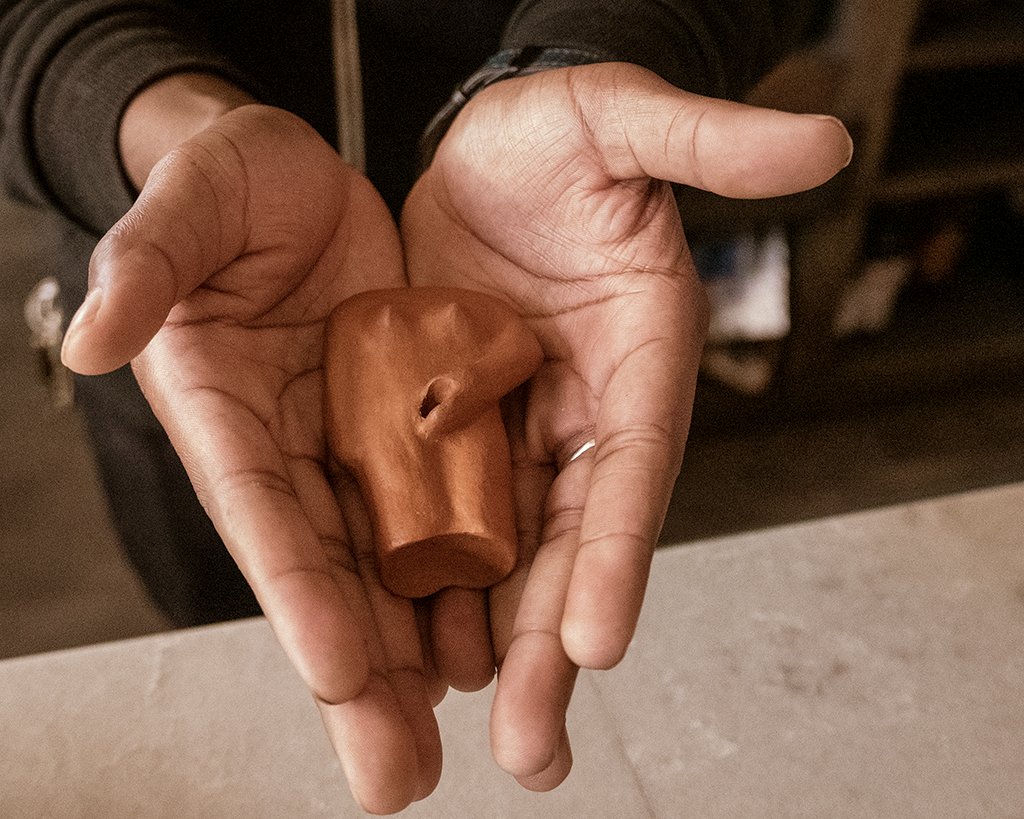Cultivation of Life
Artist Paolo Piscitelli on sustainable spiritual trajectories
Courtesy of Paolo Piscitelli
The beautiful is neither something divine nor a power. It serves the cultivation of life.
–Gernot Böhme, The Aesthetics of Atmospheres (2016)
As a sculptor of small-scale anthropomorphic, zoomorphic, and hybrid sculptures, I am often asked if my work depicts Gods or Goddesses.
My answer: The sculpture knows nothing about it.
It is telling that, in certain cultures, the spiritual role of the shaman coincides with the role of the sculptor.
Eden (a sculpture of the world that has nothing in common with the world) (2022) by Paolo Piscitelli. Courtesy of Paolo Piscitelli
When I am not teaching or making sculpture, I go to read and write in local coffee shops or East Liberty bars in Pittsburgh. Usually, I carry my hand-sculptures in my pocket or bag and set them on the bar or table. They keep me company–as fidgets, page holders, or social bridges.
Strangers, intrigued by my sculptures, often ask if they are Gods or Goddesses. I have arrived to the conclusion that my figural objects probably have dual sexuality, embodying ambiguous, multiple genders, like the many cases of fluidity revealed in recent studies on prehistoric sculptures or like in the cases of transvestism of priests and shamanic androgenization in many cults.
Ambivalence (2023) by Paolo Piscitelli.
Courtesy of Paolo Piscitelli
Extended (2020) by Paolo Piscitelli. Courtesy of Paolo Piscitelli
These casual interlocutors usually ask if they can hold the sculpture. The small figurines are not proving to be Gods/Goddesses. But through the devotional touch of the interlocutor, I experience a deep sense of respect: the sense of the sacred more than that of the divine. Through the mystery of touch, the figurine becomes the threshold into which to enter the site of identity; for a moment, I have the feeling that I am in a place without extension, non-measurable, without history, where there is no progress, where I can experience the condition of immobility.
In the opening essay “Creation and Anarchy, The Work of Art and the Religion of Capitalism,” in Archeology of the Work of Art (2019), Giorgio Agamben poses a basic and essential question: What is the place of art in the present?
For me, the mundane places of my casual encounters with strangers through my figurines are not simply containers of social interaction and human behavior but places where physical proximity and touch participate in matter, its atmospheres and quasi-animistic soul.
The advent of the monotheistic religions advocated for the negation of place and sensible senses in favor of the dogma of the ubique (God is in heaven, on earth, and in every place). On the other hand, the figurine, in its place–in the hand–testifies to a previous order–that order of the local, of the polytheistic religions of gods, goddesses, ascetics, and demons.
“Perché, a differenza del Divino, che esige l’ubique, il sacro non tollera l’ubique, non tollera lo spazio, ed anzi, e’ impensabile senza un luogo.”
“Because, unlike the Divine, which demands the ubique, the sacred doesn’t tolerate the ubique, doesn’t tolerate space, and actually, is unthinkable without place.”
Gian Antonio Gilli,
Locus Sui: Religioni di Luogo (Mimesis Edizioni, 2021)
By analogy, I would say that the ubique, the religion-of-the-space, is also evident in the religion/regime of Contemporary Art. Here, the uprooting from the local, from place, has generated many homologous spaces–white-cube-like, without windows, displaced everywhere in the rich parts of the world. And if place cannot be empty–because it is not just a container–the space is self-sufficient and the presence of whatever occupies it almost irrelevant.
Since moving to Pittsburgh from Italy, I became an underground artist, an outsider. Where are my sources of personal revelations, of respect, of the sacred? They spring up in my neighborhood, in my intimate spaces, in my encounters with fleeting individual existences and fixed sculptural forms. With beguiling immediacy, each curious hand that wraps around my figurines brings together a community of invisible, silent stories.






